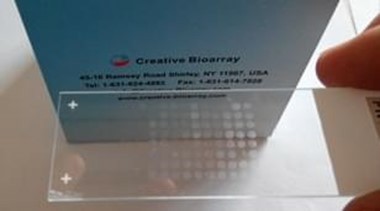Multiple Animal Tissue Arrays
Multiple animal tissue arrays represent a powerful platform for the simultaneous analysis of diverse tissue samples from different animal species. These arrays offer a valuable resource for comparative biology, enabling researchers to examine tissue-specific molecular characteristics, histological features, and disease pathology across a spectrum of animal models.

Construction and Standardization of Multiple Animal Tissue Arrays
The construction and standardization of multiple animal tissue arrays involve a series of intricate processes aimed at ensuring the integrity, uniformity, and reproducibility of the arrays. The process commences with the meticulous selection of representative tissue samples from a diverse range of animal species. The selected tissue samples undergo core biopsies, where precision core punches are utilized to obtain tissue cores of uniform dimensions from each sample. These cores retain the architectural and molecular characteristics of the original tissue, ensuring accurate representation. Subsequently, the tissue cores are methodically arrayed onto recipient blocks using specialized arraying instruments.
Throughout the construction process, stringent quality control measures are put in place to validate the integrity of the arrays. This includes a rigorous assessment of tissue morphology, antigenicity, and the overall quality of arrayed samples. Standardization procedures are meticulously followed to ensure consistency in array construction, minimizing variations and maximizing reproducibility.
Experimental Design and Data Interpretation in Utilizing Multiple Animal Tissue Arrays
Utilizing multiple animal tissue arrays, researchers must consider various aspects of experimental design and data interpretation to derive meaningful insights. The choice of animal models, sample size, and statistical analysis methods are critical considerations in study design.
Researchers utilize multiple animal tissue arrays to compare molecular profiles and histological features across different animal species. Comparative analysis involves identifying similarities, differences, and patterns in tissue-specific characteristics and disease pathology. Through comprehensive data analysis, researchers can draw robust conclusions and make meaningful comparisons across different animal species, yielding valuable insights into tissue-specific molecular profiles and disease pathogenesis.
Applications of Multiple Animal Tissue Arrays in Drug Development and Toxicology Studies
- Evaluating tissue-specific drug responses. Multiple animal tissue arrays facilitate the assessment of tissue-specific responses to therapeutic compounds across different animal models. This enables researchers to gain insights into the pharmacological effects of drugs on various tissues, aiding in the understanding of potential efficacy and safety profiles.
- Assessment of tissue-specific toxicity. Multiple animal tissue arrays provide a platform for the evaluation of tissue-specific toxicological effects exerted by chemical compounds or environmental factors. By examining the histological and molecular changes in various tissues, researchers can assess the potential toxic effects of substances across different animal species.
- Identification of drug targets. By analyzing tissue-specific molecular profiles in response to drug treatments across multiple animal species, researchers can identify potential drug targets and pathways relevant to therapeutic interventions. This can inform the development of targeted therapeutics for specific tissue types or diseases.
- Screening for biomarkers of toxicity. Analysis of tissue arrays allows for the screening and identification of tissue-specific biomarkers associated with toxicological responses. This facilitates the early detection of organ-specific toxicities and the development of biomarker-based assays for toxicological assessments.
Creative Bioarray Relevant Recommendations
Creative Bioarray is one of the most reliable providers with the highest quality tissue arrays in the industry and maintains the most stringent standards on quality controls. We have constructed high-quality tissue arrays from our in-house repository with a comprehensive archive of over 30,000 animal samples.
| Species | Cat. No. | Product Name |
| Mouse | MOUTMA001 | Mouse multiple organ normal tissue array |
| MOUTMA003 | Mouse normal tissue array | |
| MOUTMA005 | Mouse tissue array | |
| MOUTMA008 | Mouse kidney tissue array | |
| MOUTMA009 | Mouse liver tissue array | |
| MOUTMA010 | Mouse brain tissue array | |
| MOUTMA012 | Mouse stomach tissue array | |
| MOUTMA013 | Mouse muscle tissue array | |
| Primate | MOTMA001M | Adult female monkey (Rhesus macaque) normal organ tissue array |
| MOTMA004M | Rhesus monkey normal tissue array | |
| MOTMA005M | Cynomolgus monkey normal organ tissue array | |
| MOTMA006M | Cyno monkey multiple organ normal tissue microarray | |
| Rat | RATMA001 | Rat multiple organs normal tissue array |
| RATMA010 | Rat normal stomach tissue array | |
| RATMA011 | Rat normal lung tissue array | |
| RATMA012 | Rat normal kidney tissue array | |
| RATMA013 | Rat normal heart tissue array |
View our full range of tissue arrays and find what you need!